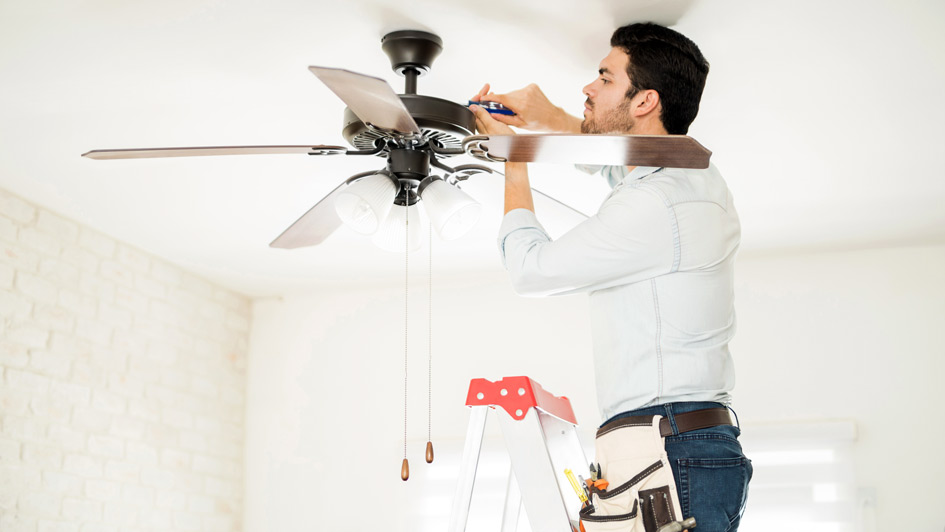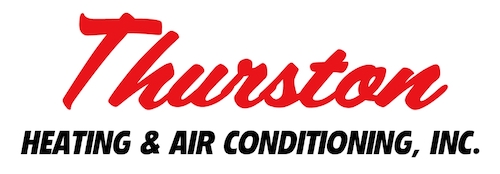
Ceiling fans are one of the most underrated ways to increase home comfort and lower energy costs. By improving air circulation and supporting your HVAC system, ceiling fans and energy efficiency are truly a natural pairing. They offer a practical, eco-friendly way to maintain your comfort in hot weather while easing strain on your AC—even preventing unnecessary air conditioning repair.
In this blog, the experts at Thurston Heating & Air Conditioning break down how ceiling fans can keep you cool while increasing your HVAC efficiency. We'll also share some HVAC efficiency tips that make the most of ceiling fans.
Comfort vs. Temperature: Getting Comfortable with the Wind-Chill Effect Indoors
Ceiling fans don’t actually lower the room temperature—they cool you down by moving air over your skin. This is referred to as the wind-chill effect, and it can make a room feel up to 4 degrees cooler without adjusting the thermostat. That means you stay comfortable and enjoy the benefits of indoor air circulation from your ceiling fan while minimizing air conditioner use—helping reduce your electric bill in summer.
The Best of Both: Benefits of Using Fans and Air Conditioning Together
There are several advantages to using ceiling fans and air conditioning at the same time, especially on hotter days. By using both, you maximize HVAC efficiency and keep your home cooler with less work from your cooling system.
Why you should use ceiling fans and AC together:
- Ceiling fans help lower HVAC load by circulating cool air more evenly around a room. Limiting HVAC stress is important, because it can prevent a breakdown that may lead to premature AC or furnace installation.
- Using ceiling fans enhances comfort by getting rid of warm pockets and enhancing circulation.
- Pairing ceiling fans and AC can reduce overall energy use. If you have a home automation system, you can even fine-tune your smart thermostat settings to bump up the temp a few degrees while your ceiling fan is running.
Clockwise vs. Counterclockwise Ceiling Fan Rotation: What Direction to Spin in Summer and Winter?
To make full use of your ceiling fans year-round, it’s important to ensure blades are rotating in the right direction for the season. The direction influences how air circulates, which can either make you feel cooler or redistribute heat so you feel warmer.
When it's best to spin ceiling fans counterclockwise
When it's hot outside, ceiling fans should turn counterclockwise at a faster setting. This creates a breeze that pushes cool air downward, increasing the wind-chill effect and making you feel cooler.
When to rotate ceiling fans clockwise
In the winter, set your fan to rotate clockwise on a gentle setting. This lifts cooler air and circulates heated air down to where you can feel it, making the space feel cozier without touching your thermostat.
How to Pick Out the Best Ceiling Fan for My Home
Picking the best ceiling fan depends on a few critical considerations, such as blade design, airflow rating and room dimensions. First, look for fans that have a good blend of ECFM airflow and blade pitch to provide efficient air movement in your home:
- ECFM is how much air a fan pushes—the cubic feet per minute, or CFM—per watt of electricity consumed. Fans with greater ECFM are the most energy efficient.
- Blade pitch is the angle of the blades. A steeper blade pitch moves more air but can also stress the fan’s motor.
Also, consider room size when sizing a ceiling fan—a fan that’s too small won’t move enough air, while one that’s too big may be disruptive in a smaller room.
Raise Your HVAC Efficiency With the Experts from Thurston Heating & Air Conditioning
At Thurston Heating & Air Conditioning, our HVAC experts can help you enjoy year-round comfort while minimizing wear on your heating and cooling systems. From efficient ceiling fan strategies and air conditioning installation to smart thermostats and furnace repair, we offer comprehensive solutions that match your needs. Set up your appointment by calling 308-270-3765 today.
